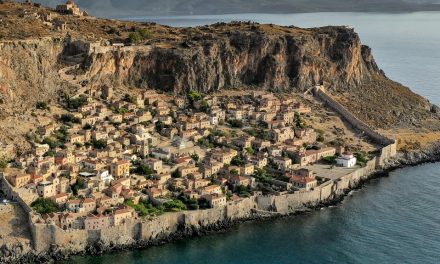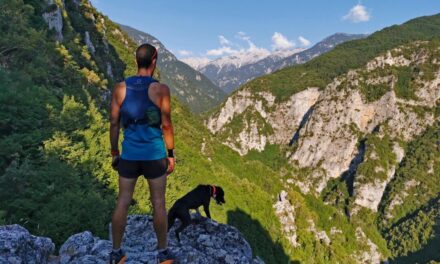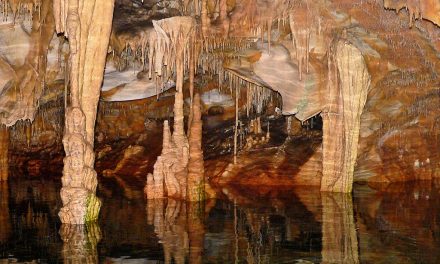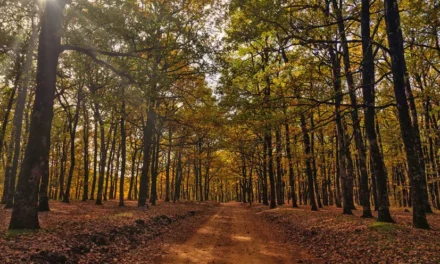Nestled in a steep cliff at an altitude of about 1,200 metres above sea level, the Sumela Monastery in Trabzon Province is believed to have a history of more than a thousand years. A site of major historical and cultural significance, as well as a prominent tourist attraction, it stands as a symbol of Pontic Greek heritage in the region, while also carrying religious importance for Greek orthodox worshippers.
The monastery is dedicated to the Virgin Mary, because it was built to house an icon of her, believed to possess miraculous properties. It is known in Greek as Panagia (“Virgin Mary”) Soumela. According to the most prevalent theory, its name comes from the Pontic Greek phrase Sou Melá, meaning “on Melas (mountain)”, from the Greek name of the mount where the monastery is situated, in the Pontic Mountains range. Melas means black, supposedly owed to the surrounding rocks’ dark hue. A second theory attributes the name to the dark colour of the icon itself, after which the whole site is said to have been named. Another etymological theory links its name to the Laz word სუმელა [sumela], which means “Trinity”.
In 2000, the Monastery of the Virgin Mary was included in the UNESCO World Heritage Tentative List; the Trabzon Metropolitan Municipality now aims to have the monastery inscribed to the UNESCO World Heritage List. In August 2010, the Turkish Culture and Tourism Ministry permitted for a service for the “Dormition of the Mother of God” (August 15) to be held at the monastery, for the first time after 88 years; it then operated as a museum, attracting large numbers of tourists, with a holy mass held yearly on August 15, for the feast of the Dormition.
Sumela Monastery complex (by Bjørn Christian Tørrissen via Wikimedia Commons)
Sumela was closed to visitors in September 2015 for safety reasons due to an increase in rock falls. The restoration project, which began in February 2016, included landscaping, geological and geotechnical exploration and strengthening of the cliffs from which Sumela Monastery hangs. The first phase of the projects was completed in the spring of 2019, and the site was partially opened to visits; in July 2020, after the completion of the restoration works, the site was again opened to the public.
History
The exact date of the monastery’s founding is not known. According to Christian tradition, at some point during the reign of Theodosius I (379-395), Saints Barnabas and Sophronios, two monks from Athens, received a sign from God to search for an icon of the Virgin Mary, reportedly thought to be the handwork of St. Luke the Evangelist. They located the icon in the Pontic Mountains, near a fountain in the cliffs over the Altindere Valley, were it had reputedly been carried by supernatural agency, and in c.386 they began the construction of a church to house it, and two monastic cells.
The Rock Church at Sumela (by Alaexis via Wikimedia Commons)
According to sources, general Belisarius undertook its restoration and enlargement at the behest of Byzantine Emperor Justinian I, in the 6th century. It is well documented that the monastery did rise to prominence in the 13th century, after the Komnenos dynasty, descendants of a deposed Byzantine Emperor, proclaimed the Empire of Trebizond (1204–1461) in the area of Pontus, declaring themselves the true heirs of the Byzantine Empire. It is believed that it was at that time that the name “Sumela” began being used for the site.
The monastery took its present form during the reign of Alexios Komnenos III (1349-1390); according to legend, the young Alexios was saved from a storm by the Virgin Mary, and was bidden by her to rebuild the monastery complex, which until then comprised of the Rock Church and monastic cells made of wood. In 1365, a golden bull (imperial edict) issued by Alexios exempted the monastery of all imperial taxes and tributes as well as existing and future dues, from the jurisdiction and authority of the local dukes and from military and financial obligations. Sumela continued to be favoured by Alexios’ son, Manuel III and his successors; Emperor Manuel actually donated Sumela a True Cross relic.
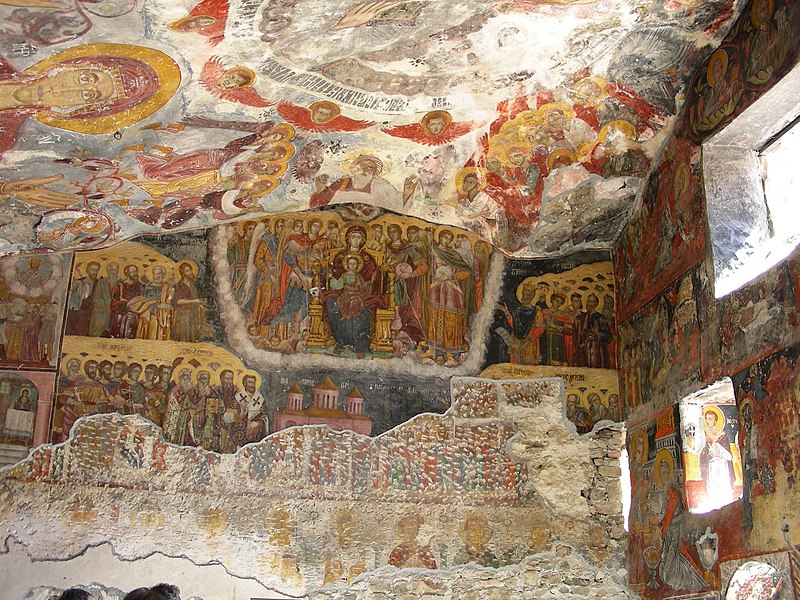 Rock Church interior, murals (by Herbert Frank via Wikimedia Commons)
Rock Church interior, murals (by Herbert Frank via Wikimedia Commons)
Following the conquest of Trebizond by the Ottomans in 1461, the sultans issued decrees confirming the rights of the Sumela Monastery. The Voivodas of Wallachia also took a close interest in Sumela from the second half of the 18th century onwards, and would often offer their support and financial aid.
1682 saw the founding of the Phrontisterion of Trapezous, a Greek educational institution, having as its main goal the cultivation of the national and religious identity of the local Greek communities; the Phrontisterion was housed in the Sumela monastery until 1902, when it was relocated in a new building in the city of Trabzon.
In c. 1860 new structures were added, forming a large complex of buildings, including prayer and sleeping rooms for pilgrims. Renowned for its miraculous icon and holy fountain, as well as the impressive natural scenery of the site, the monastery became a major Greek orthodox pilgrimage destination, and remained so until the early 20th century. There are several descriptions of the monastery found in the writings of 19th-century chroniclers and travelers.
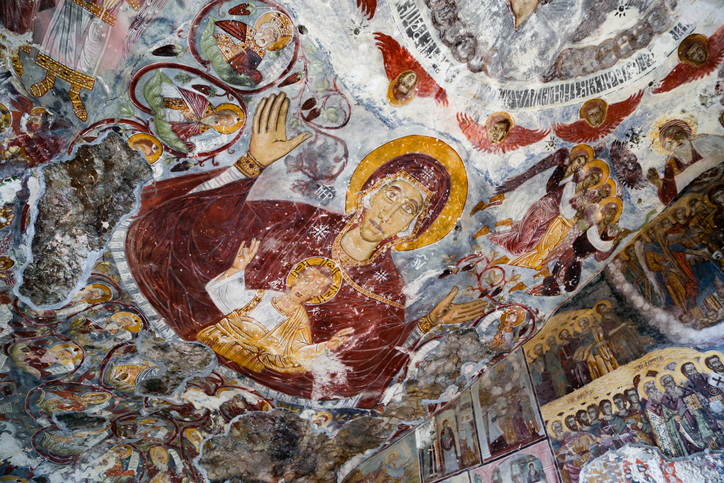 Rock Church interior, ceiling, murals (by tolgart from iStock / Getty Images Plus)
Rock Church interior, ceiling, murals (by tolgart from iStock / Getty Images Plus)
In 1923, the Ottoman Empire collapsed and the independent Turkish Republic was founded by Ataturk. The Greek and Pontic Greek populations of Asia Minor were expelled, and the Sumela Monastery was abandoned. Its wooden parts were destroyed by a fire that broke out in c. 1930, while further destruction was inflicted upon the buildings and murals by pillagers and treasure hunters in the years to follow. In 1972, the monastery, still in ruins, was taken over by the Trabzon Museum, and restorations works began taking place in the 1980s. In the 2000s, Sumela once again became a popular faith tourism and sightseeing destination, until it had to close down for restorations in 2015.
The icon of the Virgin Mary, along with other relics, had been hidden by monks before they had to abandon the monastery, and was later retrieved, transported to Greece in 1931 and placed in the Byzantine and Christian Museum in Athens. In 1952, it was enshrined in the newly-founded Panagia Soumela church in the village of Kastania, in the Vermio Mountains in Northern Greece.
The monastery complex
The Sumela Monastery is built on a steep cliff; it is reached by means of a steep path through the forest; final access to the building is via a long and narrow stairway. The ruins of the large aqueduct that once supplied water to the monastery can be seen at the side of the cliff at the entrance. The principal elements of the complex are the Rock Church, several chapels, kitchens, student rooms, a guesthouse, a library, and a holy water fountain.
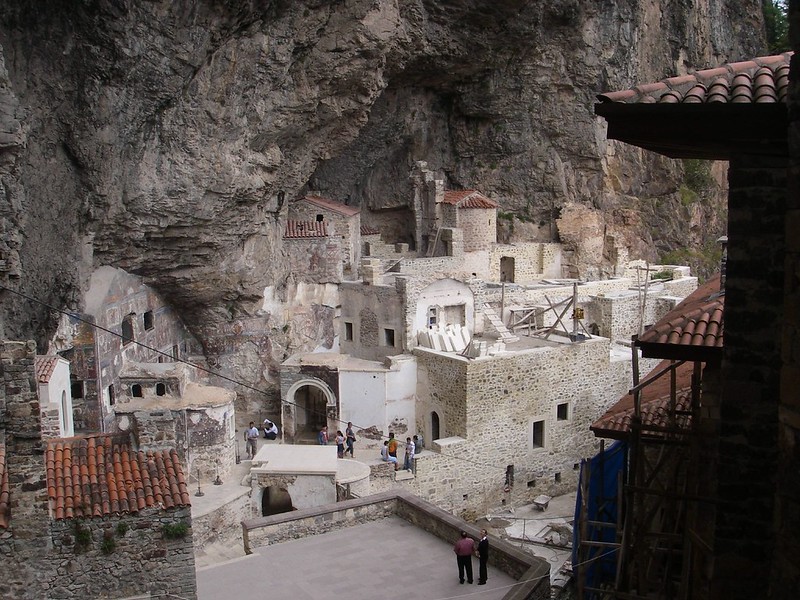 View of the Sumela Monastery complex interior (by Jean & Nathalie via flickr)
View of the Sumela Monastery complex interior (by Jean & Nathalie via flickr)
The Rock Church is the core of Sumela Monastery complex, and its oldest and most historic part. This is the place where the icon is supposed to have been found; it was formed by carving into the cave, smoothing the surfaces and closing the mouth of the cave with a straight wall. A small adjacent chapel was added on a later period.
The inner and outer walls of the church are covered in frescoes depicting biblical scenes from the lives of Jesus Christ and the Virgin Mary. The murals of the chapel were painted on three levels in three different periods; those visible today mostly date from the 18th century. Older frescoes from the time of Alexios Komnenos have been destroyed or covered by more recent ones. The frescoes have been subjected to extended damages as a result of vandalisms throughout the years, including the destruction of faces depicted as well as many graffiti carvings.
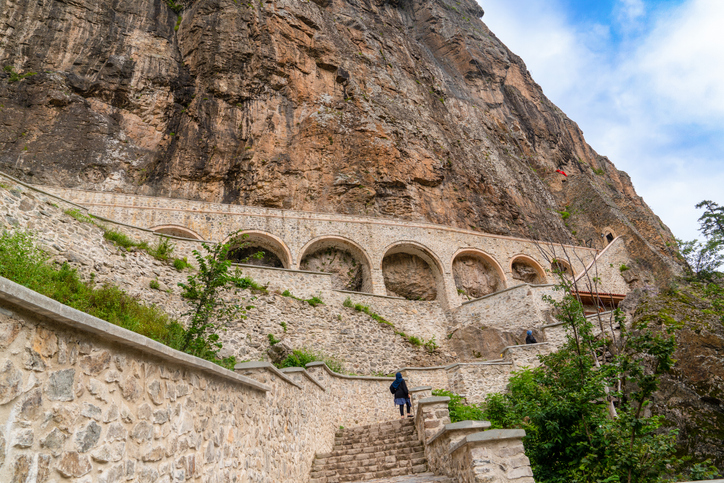 Sumela aqueduct and entrance (by Thankful Photography from iStock / Getty Images Plus)
Sumela aqueduct and entrance (by Thankful Photography from iStock / Getty Images Plus)
The large aqueduct at the entrance, which supplied water to the Monastery, is constructed against the side of the cliff. The aqueduct has many arches which have mostly been restored. There is a guard-room next to the entrance. The stairs lead down from there to the inner courtyard. On the left, in front of a cave, there are several monastery buildings. There is a library on the right side.
At the far end of the courtyard a narrow corridor extends above a narrow, jutting rock and from this point an impressive building contiguous with the cliff face extends in the other direction. This part of the complex, which is most striking when viewed from a distance, is the main monastery building where the monks once lived. Apart from the three main floors there are several rows of cellars below and a set-back storey at the top.
Read also via Greek News Agenda: Three religions meet in the Castle of Ioannina; Kastellorizo: Greece’s remotest island; International city names of Greek origin
N.M. (Intro image: View of Sumela Monastery [by Bjørn Christian Tørrissen via Wikimedia Commons])

